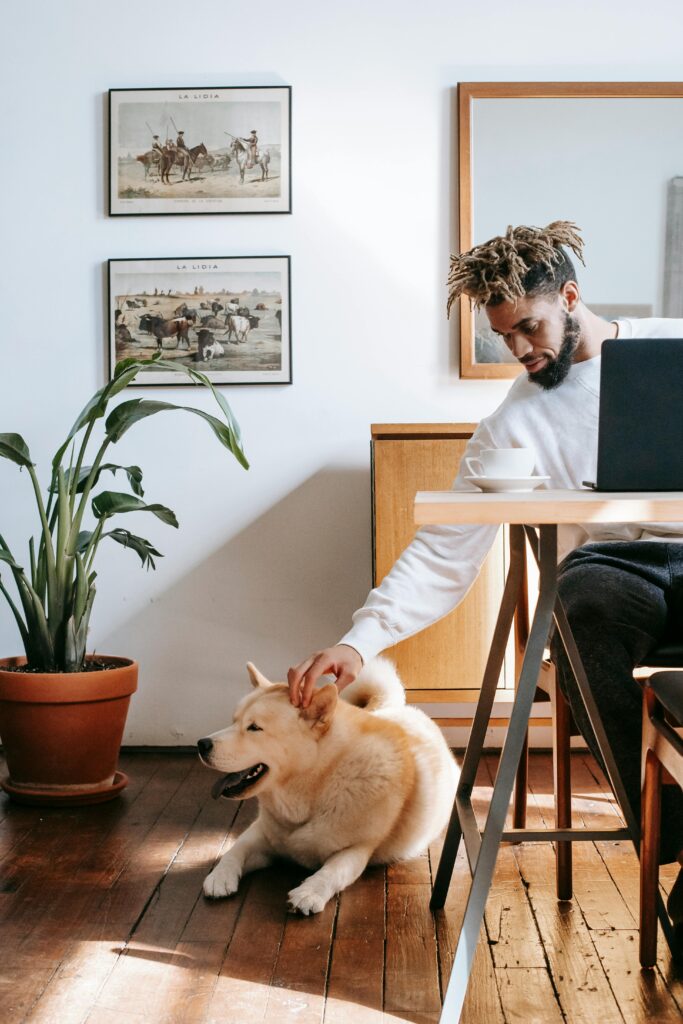Socialization is more than just letting your dog meet other dogs at the park. True socialization means exposing your dog to a variety of people, environments, sounds, and situations in a way that builds confidence, not fear. And real-world socialization? That’s the key to having a calm, well-mannered companion you can take anywhere.
If your goal is to bring your pup along to patio lunches, family parks, or pet-friendly stores without chaos, now’s the time to focus on structured exposure. As a dog trainer in North Alabama, I’ve helped countless owners turn distracted or anxious dogs into confident, relaxed companions in public. Let’s walk through how you can do the same.
Why Real-World Socialization Matters
Dogs who lack proper socialization often become nervous, reactive, or overly excited in new places. They may bark at strangers, lunge at other dogs, or shut down when overwhelmed. This isn’t the dog’s fault, it’s a sign they weren’t given the tools to succeed.
Real-world socialization teaches your dog how to behave appropriately in unpredictable environments. It also strengthens your communication and trust, since your dog learns to look to you for guidance.
The good news? Even if your dog missed out on early exposure, it’s never too late to start. Our Basic Obedience Program is built to give dogs of all ages the confidence and skills they need to succeed in real-life scenarios.
Start with Controlled Environments
Before heading into a busy coffee shop or crowded festival, ease your dog into public life by visiting quieter locations where you can control the pace and proximity.
Try these beginner-friendly settings:
- A quiet park during off-hours
- A pet-friendly hardware store on a weekday
- A calm patio or outdoor cafe in the early morning
- School parking lots on weekends for exposure to new scents and surfaces
Always start with distance. Don’t overwhelm your dog by diving straight into crowds. Let them observe calmly from afar, rewarding them for relaxed behavior. As your dog gains confidence, you can gradually decrease distance and increase difficulty.
Teach Calm Behavior in New Settings
Before your dog can succeed around distractions, they need a strong foundation of obedience. Commands like heel, sit, down, and place help your dog focus on you rather than the environment.
Use real-world situations as training opportunities. At a park, ask your dog to sit and stay while joggers pass. At a cafe, reinforce the “place” command under the table while people walk by.
We discuss how to build this type of impulse control during stimulating situations in our post on handling excitement and barking when guests arrive, and the same principles apply in public settings.
Use the Right Equipment
The right gear makes all the difference when navigating public spaces. For real-world socialization, you want control and clear communication without discomfort.
We recommend:
- A sturdy 4 to 6-foot leash (not retractable)
- A well-fitted collar or training tool as recommended by your trainer
- A treat pouch or easy-access rewards
- A portable mat or towel for place command training
Using proper gear allows you to redirect and reward your dog effectively, keeping their focus where it belongs, on you.
Focus on Quality Over Quantity
One calm, successful trip to a cafe is more valuable than five chaotic visits to the dog park. The goal of real-world socialization isn’t simply exposure. It’s controlled, positive experiences that build confidence and trust.
Keep sessions short and successful:
- Aim for 10–20 minutes at first
- End on a good note
- Reward calm behavior
- Avoid overwhelming your dog with too many stimuli at once
If your dog seems nervous, give them space. Allow them to observe and process without forcing interaction.
Build Consistency Through Repetition
Dogs don’t generalize well. Just because your dog can sit quietly at home doesn’t mean they’ll do the same at the park. Repetition in a variety of locations is key to true obedience and comfort.
Challenge your dog by practicing:
- Heel through a crowd at a farmer’s market
- Place at a picnic table during lunch
- Down-stay while kids play nearby
- Leave it when passing food scraps or distractions
Want to take it up a notch? Our Basic & Advanced Obedience Program includes public training sessions designed to help dogs work through distractions and stay focused outside the home.
What About Other Dogs and Strangers?
Real-world socialization doesn’t require your dog to interact with every person or pup they meet. In fact, teaching your dog to ignore distractions and simply coexist calmly is far more valuable.
You can always reward your dog for eye contact and focus on you when other dogs pass. Not every interaction has to include sniffing, play, or petting.
According to the American Kennel Club, effective socialization is more about positive exposure than direct contact. Let your dog observe the world with you as a calm guide.
Think Beyond the Park
Real-world training doesn’t stop at parks or cafes. Try socializing your dog in everyday places they’ll encounter often:
- Vet lobbies
- Grooming salons
- Pet supply stores
- Sidewalks near busy intersections
- Drive-thru lanes or parking lots
The more places your dog experiences with calmness and control, the more confident they’ll be in any environment.
Final Thoughts: Confidence is Built in the Real World
The best socialized dogs aren’t the ones who greet everyone. They’re the ones who can stay calm, obedient, and confident no matter where they are. With patience, structured training, and consistent exposure, your dog can become the kind of companion you’re proud to bring anywhere.
Need help building those real-world skills? Our experienced trainers are here to guide you. Reach out to us today to get started with a training plan tailored to your lifestyle and your dog’s needs.
Social Media Teaser:
Ready to bring your dog to cafes and parks without chaos? Learn how to socialize your pup the right way, starting with confidence and calm behavior.
Hashtags:


